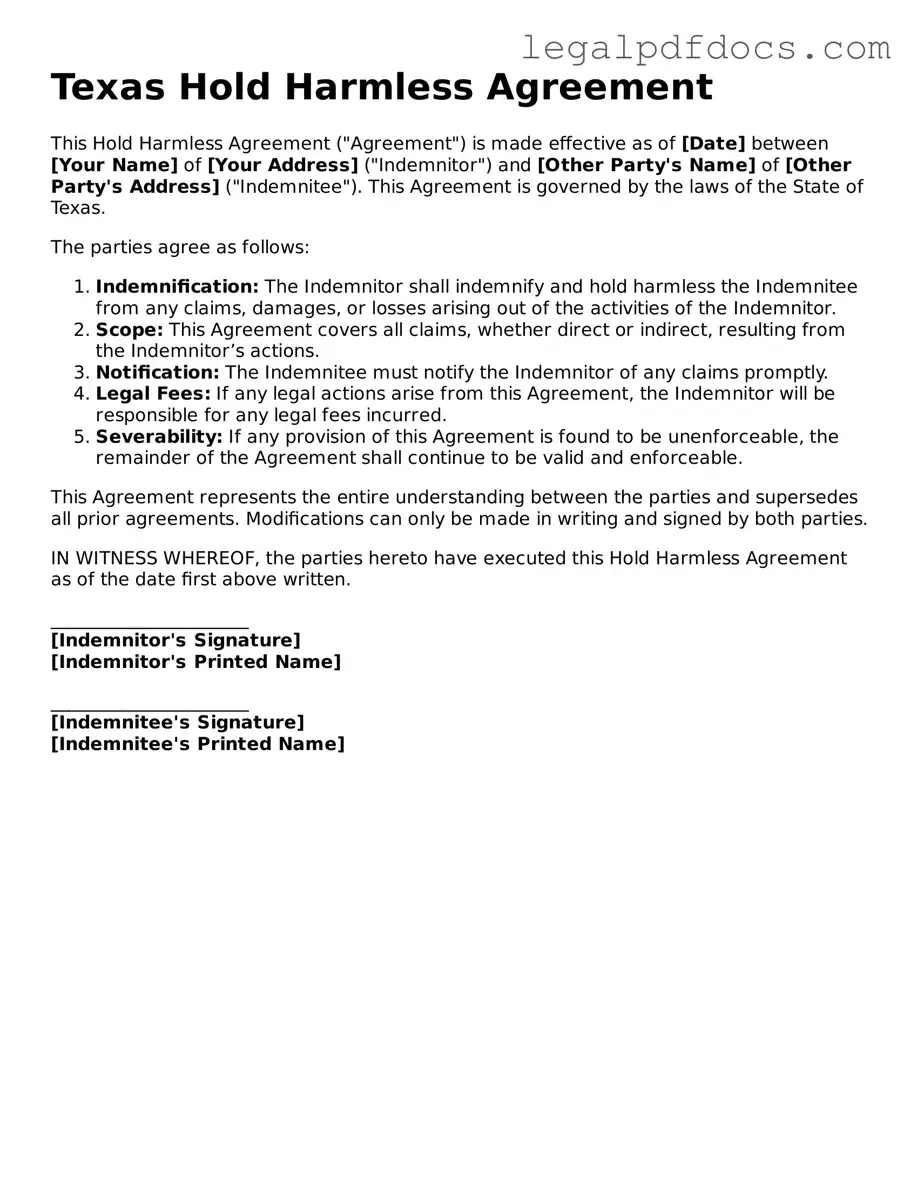In the realm of legal agreements, the Texas Hold Harmless Agreement form stands out as a crucial document designed to protect parties from liability in various situations. This agreement is often utilized in contexts such as construction projects, rental agreements, and recreational activities, where one party seeks to minimize their risk of being held responsible for any injuries or damages that may occur. By signing this form, individuals or businesses agree to assume the risks associated with certain activities and release the other party from any potential claims. The document typically outlines specific responsibilities and the extent of liability being waived, ensuring clarity and mutual understanding between the involved parties. Furthermore, it often includes essential details such as the names of the parties, a description of the activities covered, and any relevant dates. Overall, the Texas Hold Harmless Agreement serves as a protective measure, fostering a safer environment for all parties while delineating the boundaries of responsibility.
